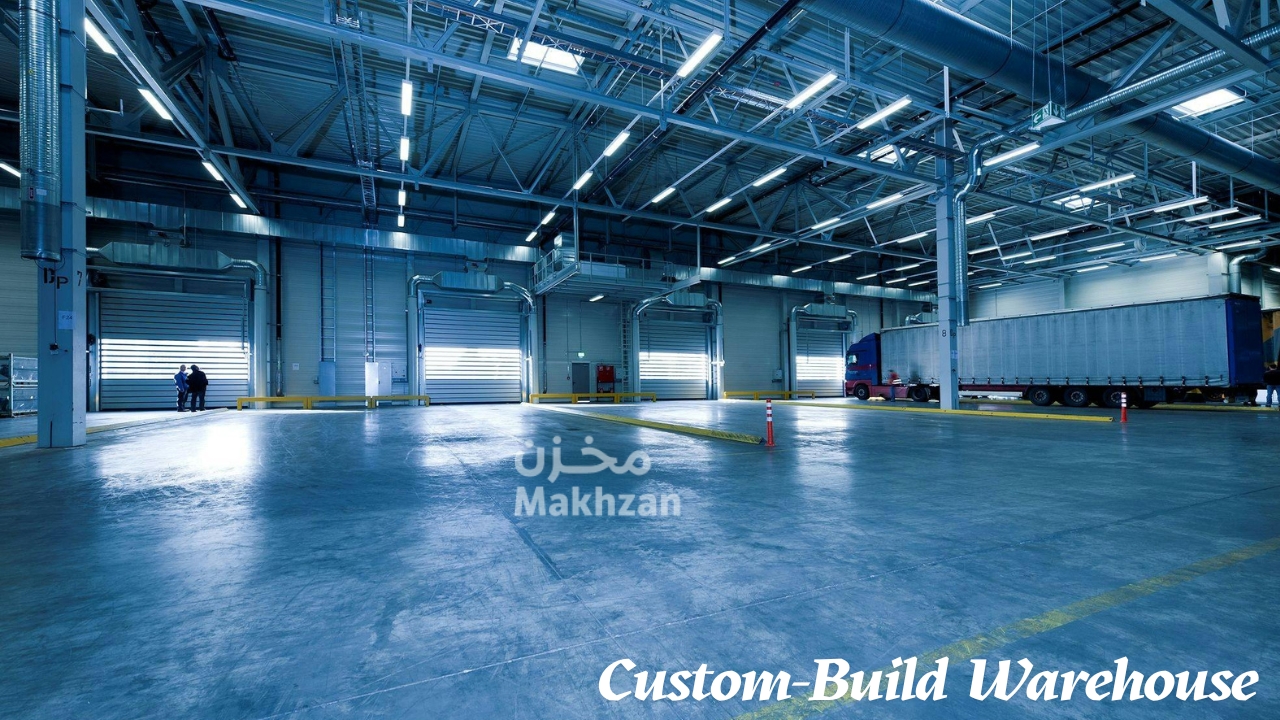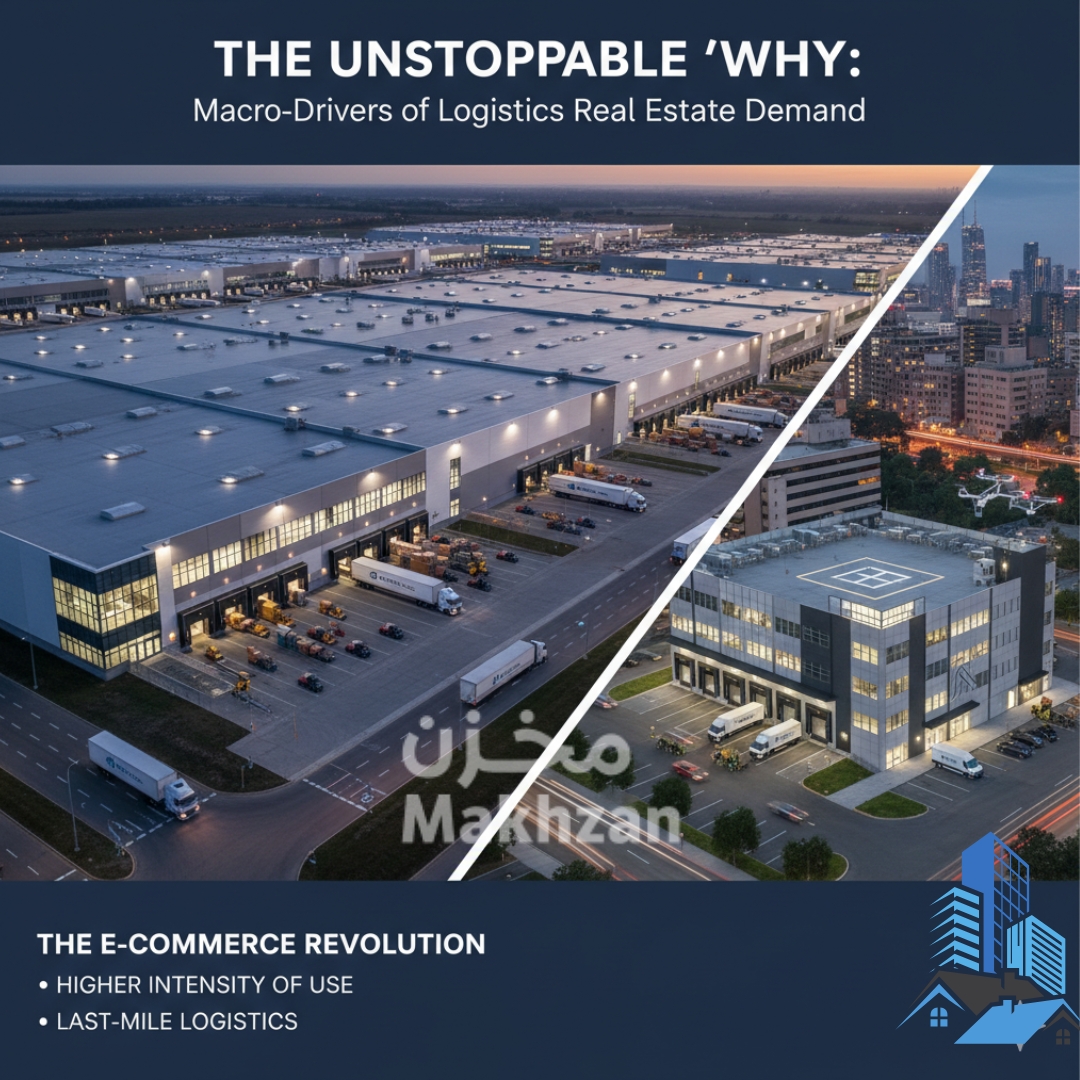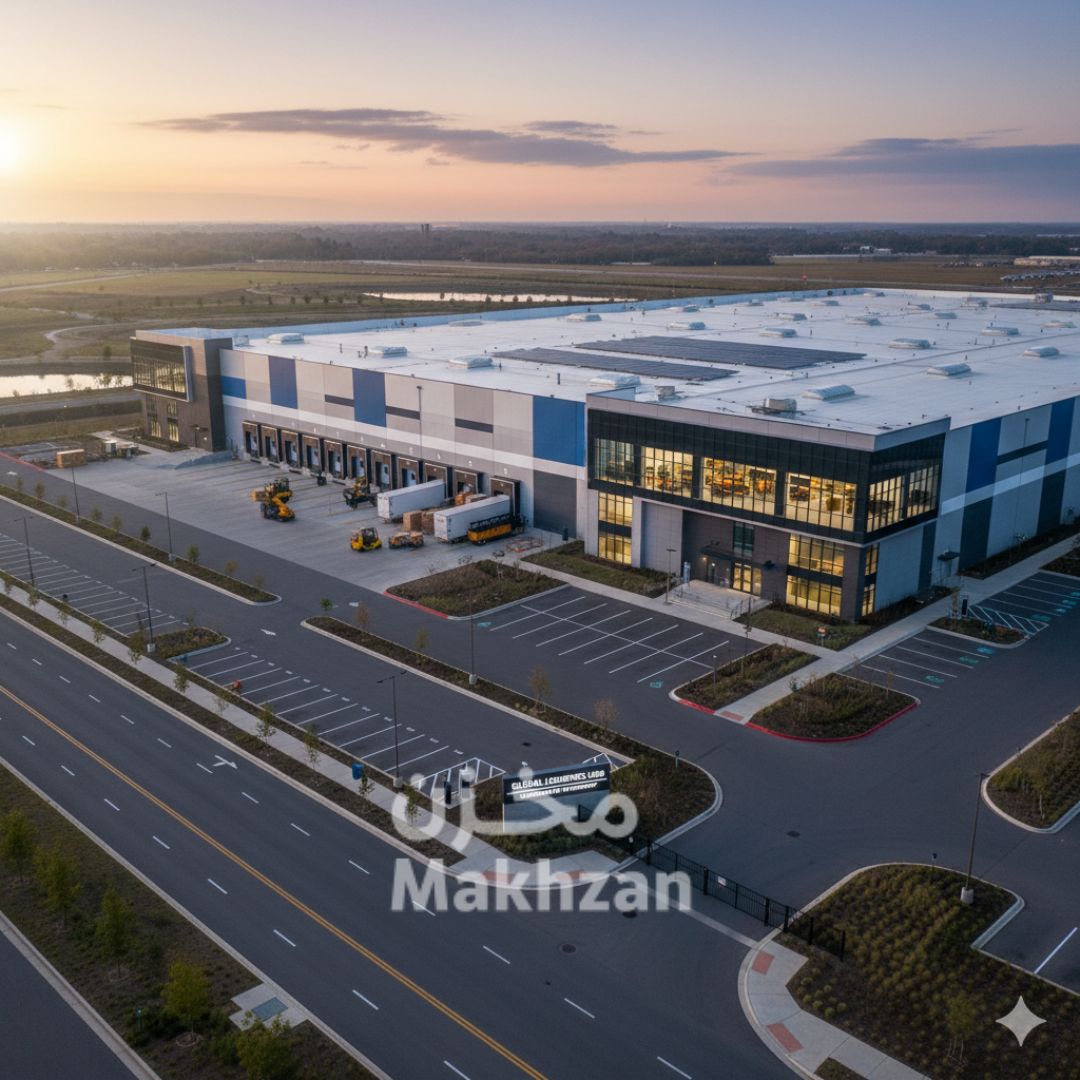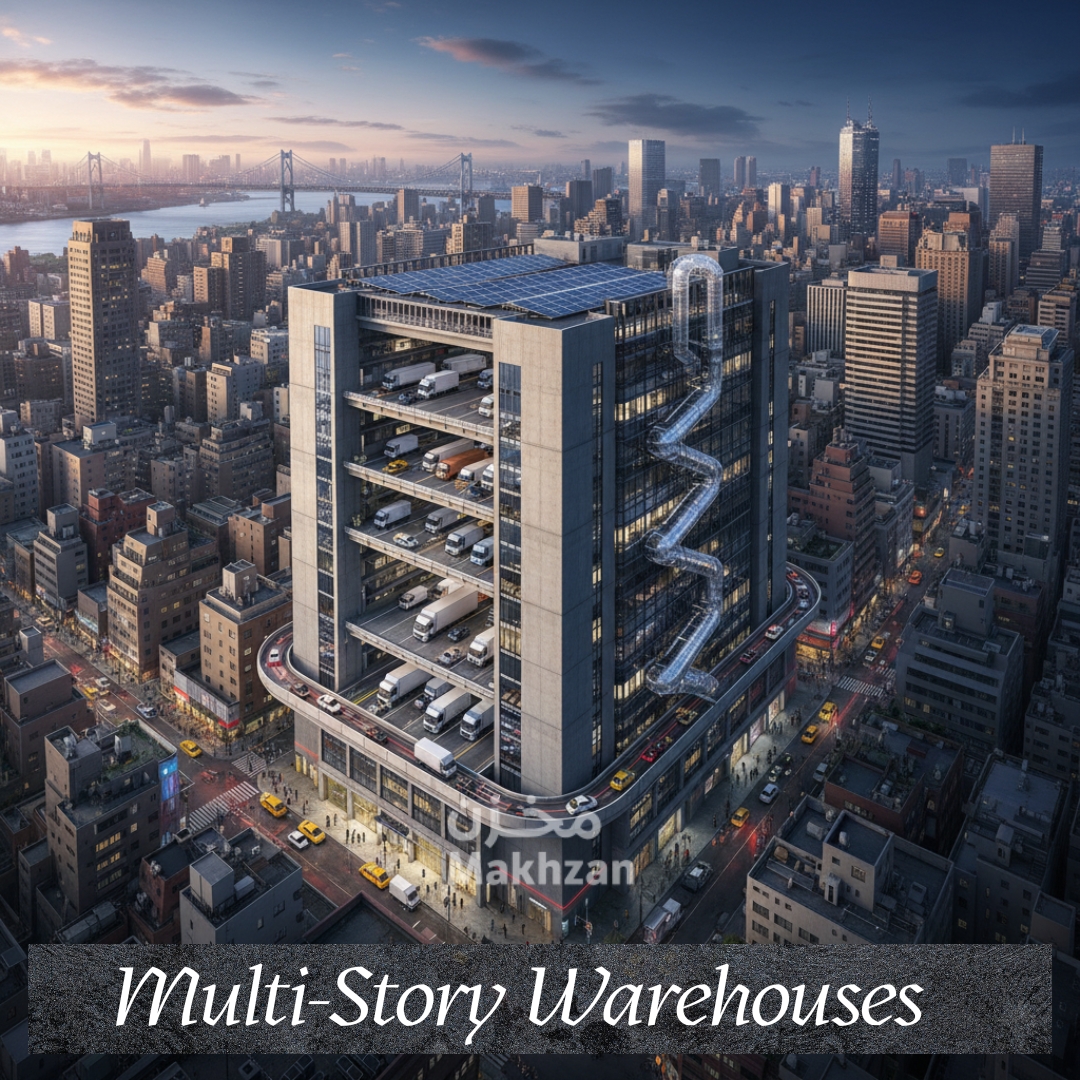The Ultimate Guide to Custom-Build Warehouse Investment & Logistics Real Estate Investment
The global supply chain has evolved beyond just a business-to-business framework; it’s now a direct-to-consumer phenomenon. The rapid rise of e-commerce, driven by enduring shifts in consumer behavior, has transformed warehouses from mere storage spaces into high-tech, vital hubs of activity. For astute investors, this evolution opens up a significant opportunity. However, not just any warehouse will suffice. The future is all about specialized, efficient, and strategically positioned facilities. Welcome to the realm of Custom-Build Warehouse investment & Logistics Real Estate Investment.
While speculative (spec) building-constructing a warehouse without a tenant lined up has its advantages, the “build-to-suit” or custom-build approach presents a more attractive option. It reduces risk, ensures steady cash flow, and meets the intricate demands of today’s 3PLs (Third-Party Logistics), retailers, and manufacturers.
In this all-encompassing guide, we’ll dive into every aspect of custom-built warehouse investment. We’ll discuss the reasons behind the logistics boom, the financial benefits of the build-to-suit model, the investment journey from start to finish, and the key risks you need to manage.
Part 1: What is a Custom-Built Warehouse? (The “Build-to-Suit” Model)
A custom-built warehouse, often referred to in the industry as a “Build-to-Suit” (BTS) project, is a logistics or industrial facility that’s specifically designed and constructed for a particular tenant. Unlike speculative development, where a developer builds a generic facility in the hope of attracting a tenant later, a BTS project begins with the tenant’s needs in mind.
Before construction begins, the company (the future tenant) signs a long-term lease agreement, typically lasting between 10 and 20 years. This lease outlines the precise specifications for the building.

Key Characteristics of Custom-Built Facilities:
Tenant-Specific Design: The design is driven by the tenant’s operational requirements, which can include:
Clear Height: Modern warehouses typically need clear heights of 36 to 40 feet (or even higher) to accommodate advanced racking systems.
Robotics & Automation: Specialized floor slabs are necessary to support robotic systems, intricate conveyor networks, and specific power needs.
Temperature Control: Custom-built systems are crucial for cold storage (like grocery and pharmaceutical) or climate-controlled environments.
Loading Docks: A tailored number of cross-dock or front-loading docks to align with the tenant’s throughput.
Excess Yard/Trailer Storage: Additional space for truck and trailer parking, which is a common requirement for major distributors.
Long-Term Leases: The high level of customization means tenants are committing to the site for the long haul. Leases of 15 to 20 years are typical, offering remarkable income stability for investors.
Prime, Strategic Locations: The tenant often plays a role in selecting the site based on their specific supply chain needs, prioritizing closeness to shipping ports, highway interchanges, rail hubs, or densely populated areas for “last-mile” delivery.
This model shifts the investment perspective from a speculative real estate gamble to a stable, income-generating asset, backed by a long-term contract with a reliable tenant.
Part 2: The Unstoppable “Why”: Macro-Drivers of Logistics Real Estate Demand
 Before we get into the nitty-gritty of investing in custom-built warehouses, it’s important to grasp the powerful, long-term trends that are driving the logistics sector. This isn’t just a fleeting cycle; it’s a fundamental shift in the economy.
Before we get into the nitty-gritty of investing in custom-built warehouses, it’s important to grasp the powerful, long-term trends that are driving the logistics sector. This isn’t just a fleeting cycle; it’s a fundamental shift in the economy.
- The E-Commerce Revolution
E-commerce has been steadily increasing its share of total retail sales for the past decade, and the pandemic has only accelerated this growth. This surge has a significant impact on the demand for warehouse space:
Higher Intensity of Use: E-commerce fulfillment needs about three times more logistics space compared to traditional brick-and-mortar stores. This is largely because of the greater variety of products (SKUs), the need for individual item picking and packing stations, and the extensive areas required for processing returns.
“Last-Mile” Logistics: The rising expectation for 2-day, 1-day, and even same-day delivery has given birth to a new asset class: urban “last-mile” facilities. These smaller, custom-built properties are crucial for delivering goods quickly to densely populated areas.
- Supply Chain Modernization & Resiliency
Recent global disruptions have highlighted the weaknesses of “just-in-time” inventory systems. As a result, companies are now adopting a “just-in-case” approach, which includes:
Onshoring & Nearshoring: This involves relocating manufacturing and essential inventory closer to consumers to lessen dependence on far-off suppliers. This shift is directly boosting the demand for new, custom-built manufacturing and distribution centers in North America and Europe.
Safety Stock: Businesses are ramping up their inventory levels to prepare for future disruptions. This “safety stock” needs to be stored somewhere, which is driving up the demand for warehouse space overall.
3. The Rise of 3PLs (Third-Party Logistics)
As supply chains grow increasingly intricate, a wide range of companies, from fresh startups to established Fortune 500 giants, are turning to specialized third-party logistics (3PL) providers to handle their logistics needs. These 3PLs are major players in the logistics space, and their varied clientele often demands highly specialized, custom-built facilities capable of managing everything from clothing to pharmaceuticals.
- Technology & Automation
Today’s logistics landscape is all about technology. The use of robotics, AI-driven inventory management, and automated sorting systems has become essential for staying competitive, rather than just a nice-to-have.
Bespoke Requirements: A standard “box” warehouse simply can’t keep up with this level of technological demand. Tenants are looking for custom builds that feature strong power infrastructure, super-flat and reinforced floors to support robotics, and ample height for multi-level mezzanine systems.
Cold Storage: This is a rapidly expanding niche. The surge in online grocery and pharmaceutical deliveries, especially for vaccines, has led to a huge demand for temperature-controlled, custom-built warehouses, which are both complex and costly to construct.
Part 3: The Investor’s Advantage: Why Opt for Custom-Built Warehouse Investment?
While speculative development can promise impressive returns, it also comes with its fair share of risks, such as leasing uncertainties and market timing challenges. On the flip side, the custom-built model presents a completely different investment landscape, one that emphasizes stability, predictability, and long-term value.
 1. De-Risked by Design: No Leasing Risk
1. De-Risked by Design: No Leasing Risk
This is the standout advantage. In speculative builds, developers often wonder, “If we build it, will they come?” You might find yourself with an empty building for months or even years, juggling debt service and operating expenses without any income. However, with a custom-built project, you secure a fully executed, long-term lease from a reliable tenant before you even start construction. That means your rental income is locked in from day one.
- Steady, Long-Term Cash Flow
Custom-built leases usually span 10, 15, or even 20 years. This is a stark contrast to other real estate sectors, like residential (which typically has 1-year leases) or office spaces (usually 5-10 year leases).
Bond-Like Income: This long-term, reliable income stream acts much like a high-yield corporate bond.
Built-in Rent Increases: Leases are generally “triple-net” (NNN), meaning the tenant covers property taxes, insurance, and all maintenance costs. Plus, these leases often include contractual rent escalations (like 2-3% annually or 10% every 5 years) that protect against inflation and enhance your returns over time.
- Reduced Vacancy & Turnover Costs
Since the building is tailored specifically for the tenant’s operations, they have a strong incentive to stick around. The costs and disruptions associated with relocating a complex, automated fulfillment center are enormous. This “stickiness” translates to: A very high likelihood of lease renewal.
Minimal downtime or “vacancy drag” on your investment portfolio.
No “re-tenanting” expenses (like broker commissions or tenant improvement allowances) that chip away at your profits every few years.
- High-Quality, Modern Asset
When you choose to build new, you’re not just constructing a building; you’re creating a “Class A” asset that will be sought after for years to come. This facility will meet the latest building codes and feature modern sustainability elements (ESG) such as solar-ready roofs, energy-efficient LED lighting, and EV charging stations. These upgrades not only draw in top-tier tenants but also help maintain the building’s relevance and value over time.
- Favorable Financing
Lenders are big fans of the custom-build model because it offers a sense of certainty. When you walk into a bank with a signed 15-year lease from a reputable company like Amazon, FedEx, or a major 3PL, you’re presenting a low-risk opportunity. This puts you in a great position to secure attractive construction and permanent financing terms, including lower interest rates and higher loan-to-cost ratios, compared to a speculative project.
Part 4: The Investment Process: A Step-by-Step Walkthrough
 Investing in a custom-built warehouse isn’t just a simple task; it takes a dedicated team of specialists to get it right. Let’s break down a typical timeline from the initial idea to cash flow.
Investing in a custom-built warehouse isn’t just a simple task; it takes a dedicated team of specialists to get it right. Let’s break down a typical timeline from the initial idea to cash flow.
Phase 1: Pre-Development (The Deal-Making)
Deal Sourcing & Tenant Relationship: It all kicks off with the tenant. An investor, often teaming up with a specialized developer, secures a “build-to-suit” requirement from a corporation.
Site Selection & Due Diligence: The investor and tenant collaborate to find the perfect site. This step is crucial. Due diligence includes:
Zoning & Entitlements: Making sure the land is zoned for industrial use and obtaining all the necessary permits. This can be a lengthy and intricate process.
Geotechnical & Environmental: Verifying that the land can support the structure and is free from contamination.
Logistics Analysis: Ensuring the site has great access to highways, ports, and a skilled labor force.
Lease Negotiation: This is the heart of the investment. The investor and tenant hash out all the details: rent, lease duration, escalation clauses, maintenance responsibilities, and building specifications.
Financing: With the lease signed, the investor moves on to secure a construction loan.
Phase 2: Construction (The Build)
- Design & Engineering: Architects and engineers create detailed blueprints tailored to the tenant’s specific needs (like clear height, floor load, dock doors, office space, etc.).
- Breaking Ground: A general contractor is brought on board, and construction kicks off. This phase usually takes about 9-18 months, depending on how complex the project is.
- Tenant Coordination: Throughout the construction, the investor’s team works closely with the tenant to set up their specific equipment (like racking, conveyors, and automation).
Phase 3: Stabilization & Asset Management (The Payoff)
- Certificate of Occupancy & Rent Commencement: Once the building is finished and inspected, the tenant moves in. The lease officially starts, and the rent checks begin to roll in.
Refinancing: The investor pays off the construction loan and swaps it out for long-term, “permanent” financing, usually a 10-year fixed-rate mortgage at a lower interest rate, which helps secure their profit margin. - Hold & Manage: The investor keeps the property, enjoying steady, passive income from triple-net rentals throughout the lease term.
Part 5: Risk Analysis & Mitigation Strategies
Even though investing in a custom-built warehouse comes with a lot of safeguards, it’s important to remember that no investment is completely free of risk. The key to success lies in spotting these risks and figuring out how to manage them.
Risk 1: Tenant Credit Risk
The Risk: Your whole investment hinges on just one tenant. If that tenant faces bankruptcy, your income stream could vanish overnight.
Mitigation: This is why doing thorough tenant due diligence is crucial. Investors need to carefully assess the tenant’s financial stability, credit rating, and long-term business outlook. Opting for “investment-grade” tenants (like those rated BBB- or higher by S&P) is considered the best practice.
Risk 2: Construction Risk
The Risk: Unexpected costs, material shortages, or delays in labor can wreak havoc on your project’s budget and timeline.
Mitigation: To safeguard against this, consider using a Guaranteed Maximum Price (GMP) contract with your general contractor. This type of contract sets a limit on construction costs, shifting the burden of any overruns from you, the investor, to the builder.
Risk 3: Entitlement & Zoning Risk
The Risk: You might buy land only to discover that the local authorities won’t approve your project or that it could take ages to get the necessary permits.
Mitigation: Always wait to finalize a land purchase until all essential entitlements are secured. Partnering with a knowledgeable local developer or land-use attorney is absolutely essential.
Risk 4: Re-Leasing & Obsolescence Risk
The Risk: If the tenant moves out after 15 years, you could find it tough to lease the highly customized building to a new tenant.
Mitigation: Focus on smart, forward-thinking design. Even if the building is tailored to a specific tenant, it should have “good bones.” This means following future-proof standards: 36’+ clear height, plenty of trailer parking, and efficient column spacing. A building that’s too specialized (like a “one-trick pony”) can become a liability. The aim is to create a facility that meets your current tenant’s needs while being easily adaptable for the next one down the line.
Part 6: The Future of Logistics Real Estate: What’s Next?
The custom-built warehouse sector is always evolving. Investors need to keep an eye on the trends that will shape the next wave of logistics assets.
Multi-Story Warehouses: In crowded urban areas where space is tight (think New York, Los Angeles, or London), the only way to expand is upward. Multi-story logistics facilities, which are quite common in Asia, are now making their mark in the West. These projects are complex, costly, and tailored to specific needs.
 ESG & Sustainability: Tenants and investors, including pension funds, are increasingly prioritizing sustainable buildings. Future custom builds will aim for carbon neutrality, incorporating all-electric heating, extensive rooftop solar panels, and eco-friendly building materials.
ESG & Sustainability: Tenants and investors, including pension funds, are increasingly prioritizing sustainable buildings. Future custom builds will aim for carbon neutrality, incorporating all-electric heating, extensive rooftop solar panels, and eco-friendly building materials.
Automation & Robotics-Readiness: The warehouse of the future will be largely automated, relying on robots to handle operations. This shift will necessitate even more specialized custom builds, equipped with 5G connectivity, high-density power sources, and floors designed to support autonomous mobile robots (AMRs).
The “Micro-Fulfillment” Center: As delivery times shrink from days to mere hours, there’s a rising demand for small, custom-built fulfillment centers nestled within city neighborhoods to cater to “q-commerce” (quick commerce).
FAQ: Custom-Build Warehouse Investment in Saudi Arabia
The Kingdom of Saudi Arabia (KSA) is currently undergoing one of the most ambitious economic transformations in modern times, transforming it into a global hotspot for logistics and industrial real estate.
Q1: Why is Saudi Arabia such a great market for custom-built warehouse investment?
A: The driving force behind this opportunity is Saudi Vision 2030. The Kingdom is working hard to diversify its economy beyond oil and is positioning itself as a key global logistics hub that connects Asia, Europe, and Africa. This transformation involves substantial government investments in infrastructure, including ports, railways, and airports, as well as the creation of new economic zones. Plus, with a booming e-commerce market and a growing population, the demand for modern, custom-built facilities is on the rise.
Q2: What are the main logistic “hotspots” in Saudi Arabia?
A:
- Riyadh: As the capital and the largest city, it serves as the central hub for domestic distribution and “last-mile” e-commerce fulfillment..
- Jeddah: This city is home to the Jeddah Islamic Port, the busiest port on the Red Sea, making it a vital entry point for goods coming into the Kingdom.
- Dammam: Located on the Arabian Gulf, Dammam is a key hub for the oil and gas industry and provides access to other Gulf Cooperation Council (GCC) countries.
- Giga-Projects: Ambitious projects like NEOM and King Abdullah Economic City (KAEC) are creating entirely new ecosystems that will need extensive, specialized, custom-built logistics and manufacturing facilities from the ground up.
:Q3: What specific types of custom-built warehouses are in high demand in KSA?
A: The demand is quite diverse, but some key areas include:
Advanced Cold Storage: Essential for supporting food security initiatives and pharmaceutical distribution.
Automated Fulfillment Centers: This demand is fueled by the rapid growth of e-commerce giants like Noon and Amazon SA.
Specialized Manufacturing: With the push for “onshoring,” there’s a strong need for custom-built facilities focused on light manufacturing, assembly, and value-added services.
Q4: What are the main challenges or considerations for investors in Saudi Arabia?
A: While the potential is huge, there are a few key things investors need to keep in mind:
- Regulatory Navigation: The legal and permitting landscape is changing and improving quickly, but it can still be quite complicated.
- Land & Construction: Finding and securing the right piece of land at a fair price can be competitive. It’s crucial to manage construction costs and timelines effectively.
- Local Partnerships: or foreign investors, teaming up with a strong, reputable local partner isn’t just a good idea-it’s essential for successfully navigating the market, obtaining permits, and managing the development process.

